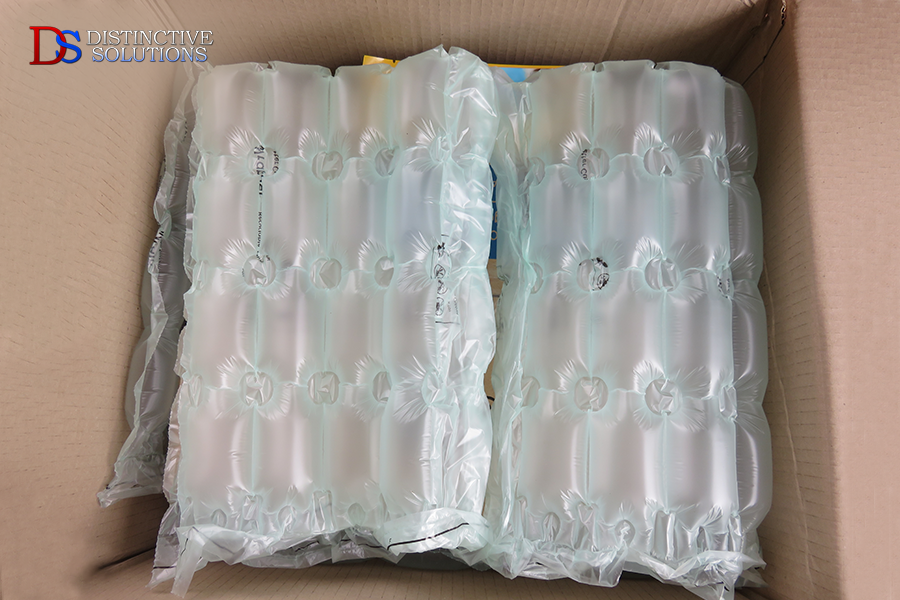By the end of 2016, Amazon had shipped over 3 million packages in a single day. The Chinese E-commerce giant Alibaba even beat Amazon by shipping over 12 million packages in a day. Statistics taken from Amazon in January of 2018 showed that they had shipped over 5 billion items all over the world through their Amazon Prime membership program in 2017 .
With void-fill packaging materials used in about seven or eight packages coming into your home every week, you can imagine the impact this has had on the packaging industry. The industry, as you guessed correctly, is booming right now.
When you order products online from any company, your biggest concern is that your items, especially fragile items may be damaged in transit. The unpredictability of the items or number of items purchased in every order, presents a unique challenge to online retailers. They stock large assortments of shipping boxes, however, because of variances in the shape and sizes of products , this means that there could be a lot of space inside the appropriate sized box that could cause the items to shift in transit and risk damages . The companies’ solution to that problem is to use void-fill packaging materials to avoid the shipment being damaged in any way during transit.
Let’s take a look into the history of void fill protective packaging and wholesale shipping supplies to see just which kind of packaging material your product needs.
Bubble Wraps
Using bubble wrap as a packaging material is excellent for fragile items. It was accidentally invented by Alfred Fielding and Marc Chavannes from New Jersey in 1957. They were trying to develop 3D wallpaper. However, this failed concept could be used to keep fragile products safe during transit. Alfred co-founded Sealed Air Corp. in 1960. Bubble wrap is not usually used as void fill but is used to protect fragile items by surrounding them with 100% air padding. This material is easy to source, affordable, and can be found in major consumer-focused stores worldwide. Many families use bubble wraps while moving from one place to another to protect breakable items. As they are incredibly lightweight, it is ideal to use them in shipping envelopes to preserve what is inside. Where electronic shipments are concerned, individuals can opt for anti-static bubble wrap options to protect their items from static electricity during transit.
Packing Peanuts
Robert E. Holden of Oregan patented his invention “loose fill packing material” in 1965. He also developed a machine to produce this form of resilient thermoplastic foam to prevent movement. The foamy cellular structure was the classic packing peanut which cushioned against shock and vibration and did not crush or become deformed.
Today, two types of packing peanuts are produced. Polystyrene or Styrofoam peanuts and Starch-based biodegradable packing peanuts.
Styrofoam packing peanuts are an incredible void fill packaging material. Since the 1990s, this previously labeled “ bad for the environment” material can be recycled and reused . If the peanuts are green, it essentially means that the product is made from recycled polystyrene. White peanuts are made from non-recycled material and pink peanuts are anti-static.
Starched -based or Biodegradable Packing Peanuts was developed in the early 1990s. They are dissolvable and nontoxic because they are made from crop-based sources like corn starch.
They are both incredibly light, which could save on shipping costs if companies package their products with packing peanuts.
Kraft Packing Paper
Carl F. Dahl developed “Kraft or Strength” paper in 1879. This process was improved in the 1930s in what is called “closed loop” which apart from some chemicals used, there is very little waste. This 100% recyclable and biodegradable product that is available in rolls or sheets is not only used for void fillpackaging material but also used for grocery bags, butcher’s wrap, and parcel wrap.
Kraft packing paper is a cheaper alternative to air pillows, but it weighs more so this is a factor that must be taken into consideration. A drawback may be loss of product protection because paper may flatten during transit which would not occur with air pillows or packing peanuts.
Air Cushion Packaging
Air cushion packaging became a major phenomenon in void fill products in 2010. They are incredibly versatile and very popular because of their ease to use and are extremely lightweight and available in numerous sizing options. They are also 100% recyclable.
They are safer to use than kraft paper and does not create the mess and disposal challenges as packing peanuts. They are comparatively inexpensive if your volume warrants the initial investment in an air fill machine.
Hope you enjoyed this brief history of some common void fill options. If you are interested in finding out more about void-fill packaging materials, contact Distinctive Solutions now to see their product range.
